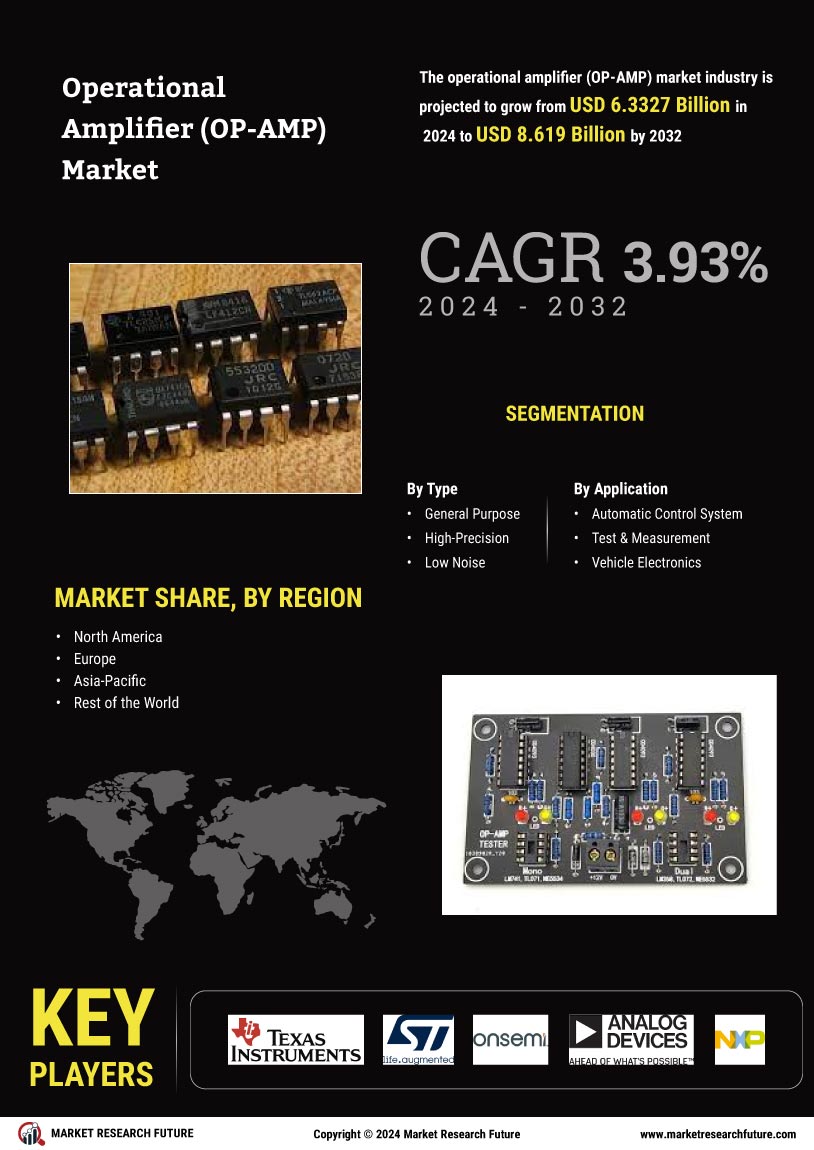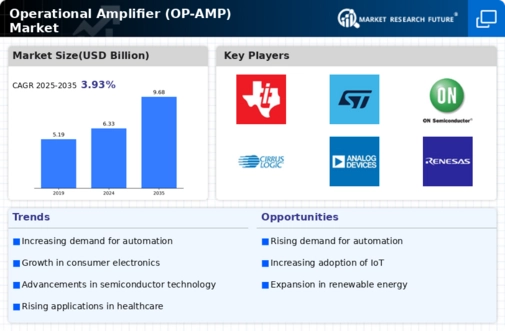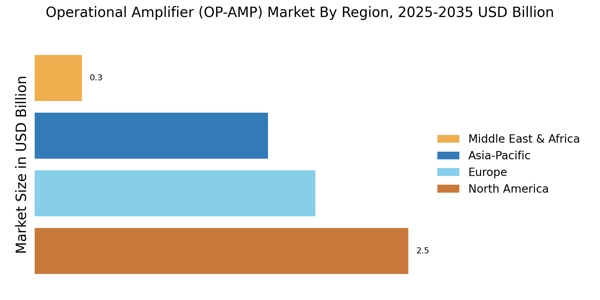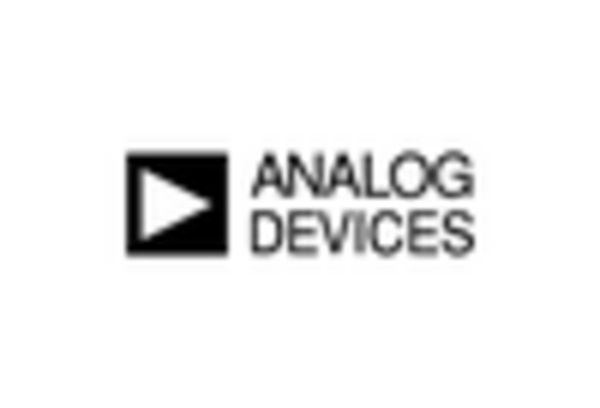Operational Amplifier Market Summary
As per MRFR analysis, the Operational Amplifier Market (OP-AMP) Market Size was estimated at 6.333 USD Billion in 2024. The OP-AMP industry is projected to grow from 6.582 USD Billion in 2025 to 9.679 USD Billion by 2035, exhibiting a compound annual growth rate (CAGR) of 3.93 during the forecast period 2025 - 2035.
Key Market Trends & Highlights
The Operational Amplifier Market (OP-AMP) Market is poised for substantial growth driven by technological advancements and increasing applications across various sectors.
- North America remains the largest market for operational amplifiers, driven by robust demand in consumer electronics and automotive applications.
- The Asia-Pacific region is currently the fastest-growing market, fueled by the rapid adoption of IoT devices and advancements in medical technology.
- The General Purpose segment continues to dominate the market, while the High-Precision segment is experiencing the fastest growth due to rising accuracy requirements.
- Key market drivers include the increasing demand in consumer electronics and the growth in automotive applications, particularly in vehicle electronics.
Market Size & Forecast
| 2024 Market Size | 6.333 (USD Billion) |
| 2035 Market Size | 9.679 (USD Billion) |
| CAGR (2025 - 2035) | 3.93% |
Major Players
Texas Instruments (US), Analog Devices (US), STMicroelectronics (FR), Maxim Integrated (US), Infineon Technologies (DE), NXP Semiconductors (NL), ON Semiconductor (US), Microchip Technology (US), Renesas Electronics (JP)
















Leave a Comment